
Tips, Tools, Methods, and Examples
Are you curious about leveraging AI to make money from home? In today’s digital world, it’s surprisingly achievable. And the best part is that you don’t need to be a tech genius to make it work for you. With the right approach, AI money-making strategies can fit into almost any skill set or industry.
Unlike get-rich-quick schemes that overpromise and underdeliver, AI offers practical, sustainable ways to earn income. From content creation and automation to e-commerce and consulting, AI is reshaping how money is made online and beyond. Businesses are willing to pay for AI-driven efficiency, and individuals who understand how to leverage these tools can tap into real financial opportunities.
This article will explore realistic and proven ways to make money with AI today. Whether you want to start a new side hustle or boost your current income, you’ll find practical methods that fit your goals.
AI isn’t here to replace human effort but to amplify it. Now is the best time to use AI to your advantage and create income on your terms.
1. Freelance AI Writing Services
Freelance AI writing is an excellent entry point for anyone looking to tap AI to make money. Many businesses need content regularly, yet they lack the time or expertise to produce quality articles, reports, and marketing copy.
By using AI tools, you can speed up content creation and earn a steady income without having to write every sentence from scratch. Below are four ways that illustrate how you can do this in a practical, step-by-step manner.
SEO Blog Posts With ChatGPT
Blog owners crave fresh, optimized content that ranks well on search engines. That’s where ChatGPT and similar AI platforms can help. Even if you’re new to writing, AI can provide a head start.
You can type in prompts to quickly generate blog outlines, compelling headlines, or complete rough drafts. To improve visibility, add popular keywords and optimize headings, subheadings, and metadata for SEO.
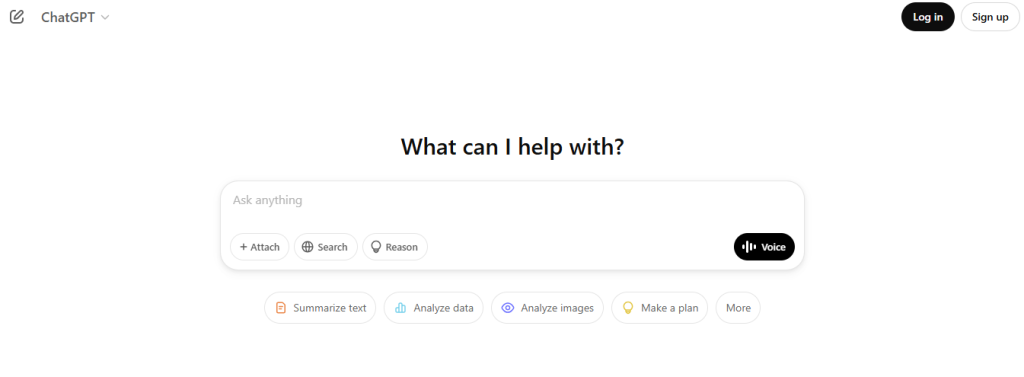

One reliable way to earn money is by offering your services on freelance sites like Upwork or Fiverr. Position yourself as a writer who leverages AI to produce high-quality content faster. You can market yourself to agencies or busy bloggers seeking quick turnarounds. Propose a flat fee per 1,000 words, or create package deals based on the length and complexity of the content.
Tips for Implementation
- Use Screenshots for Clarity: Show potential clients how you prompt the AI to generate blog outlines. A visual walkthrough can set you apart.
- Edit Thoroughly: AI output may include repetitive phrases or inaccuracies. Fact-check your finished drafts, refine grammar, and ensure the content aligns with the client’s brand voice.
- Be Upfront: Let clients know you use AI as a supportive tool, but emphasize that you still provide a human touch for final polishing.
Ghostwriting E-Books and Reports
Ghostwriting full-length e-books or in-depth reports can be lucrative. In addition to the ones mentioned previously, AI tools like Jasper and Grammarly help outline chapters, generate initial text, and even suggest further reading.
Pick topics with high demand, such as self-improvement, recipe books, or productivity guides. Since these niches are evergreen, they often attract consistent readership.
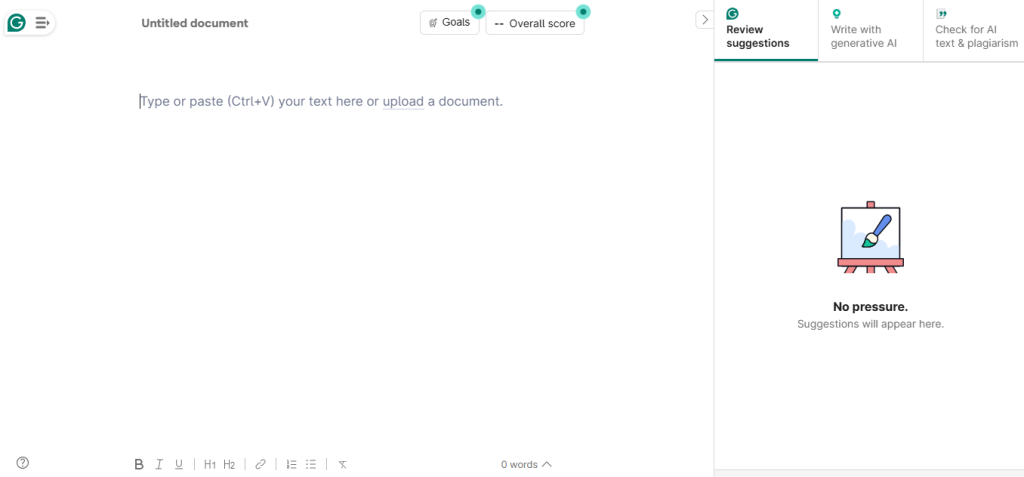

You can create e-books under your own name and sell them on Amazon Kindle or other e-book platforms. Alternatively, many online entrepreneurs want to publish material under their own brands but don’t have time to write.
Offer ghostwriting packages where you deliver the content, and they handle the rest. Ghostwriting can command higher fees because you forfeit public credit. If you’re a skilled freelancer who wants to use AI to make money, then this is one of your options.
Tips for Implementation
- Prompt AI for Structure: Ask ChatGPT to generate a detailed table of contents. Then, expand each chapter individually.
- Refine and Add Your Voice: AI might create a bland tone or overgeneralized text. To produce a more authentic read, insert real examples, anecdotes, and personal flair.
High-converting sales Copy or Email Campaigns
Sales copy and email sequences require persuasive language. They often need to reflect a specific brand identity and speak to a defined audience. AI writing tools can draft compelling subject lines, calls to action, and marketing narratives in minutes.
However, you still need to tailor the text to match the product’s tone and the reader’s pain points.
Businesses pay well for engaging sales pages and email campaigns that increase conversions. Aside from joining gig platforms like Fiverr or Upwork, you can build your own website and brand yourself as a freelance copywriter who leverages AI for faster delivery.
Package your services—for example, a five-email welcome sequence, an upsell page, and a promotional newsletter—for a set fee.
Tips for Implementation
- Offer Free Short Samples: Potential clients might hesitate to trust you right away, especially if you’re just starting out. Provide a short test email or a portion of a sales page to demonstrate your skill.
- A/B Test Your Content: Encourage clients to measure the performance of different subject lines or calls to action. Use AI to generate variations quickly.
- Maintain Brand Consistency: Sales copy must feel like it belongs to the brand’s overall marketing strategy. Edit AI outputs to ensure consistent tone, terminology, and style.
Transcription and Summaries of Meetings/Webinars
Professionals in all fields attend meetings, webinars, and training sessions. They often need quick summaries or written transcripts for reference. AI transcription tools like Otter.ai can convert audio into text rapidly, while ChatGPT can then reshape that text into concise summaries, action points, or bullet lists. It’s a huge time-saver for busy teams.
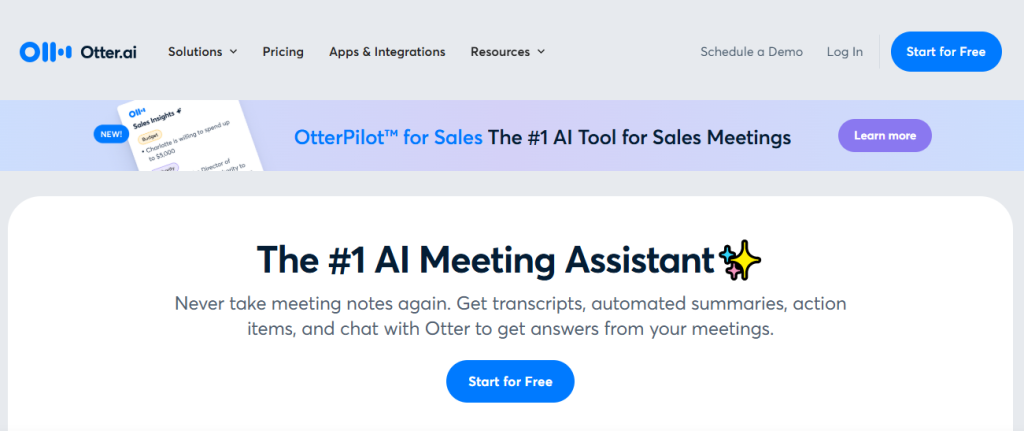

Use AI to make money with this method by charging clients for each minute or hour of audio. Most podcasters, online coaches, and remote teams prefer a flat rate for predictable costs. If you specialize in a certain industry—like legal or medical—you can command higher fees due to complex terminology.
Offer an add-on “Key Takeaways” or “Executive Summary” service, which transforms raw transcripts into easy-to-digest points.
Tips for Implementation
- Always Proofread: AI-generated transcripts might jumble words or miss context. Make sure to listen carefully to the original audio to confirm critical details.
- Format Documents Nicely: Organize text by speaker name, sections, or timestamps, and present the summary in a clean style.
Overall, freelance writing can be a highly effective method if you want to leverage AI to make money. The methods above don’t require advanced coding skills. Instead, they revolve around your ability to refine and guide AI-generated content.
It doesn’t matter what type of content you create, the key is adding a human touch to everything you produce. That sense of authenticity and accuracy makes clients happy and keeps your freelance career thriving.
2. AI-Driven Graphic Design and Art
Visuals are a central part of today’s digital landscape. Everything from social media ads to e-commerce product images requires appealing graphics. Fortunately, AI art and design tools have made it easier than ever to create professional-quality artwork.
AI-powered graphic design offers endless chances to make money, whether you specialize in print-on-demand merchandise, stock illustrations, or freelance branding services. It leverages AI’s speed and flexibility to reduce your workload without sacrificing creativity.
Ultimately, AI offers an exciting pathway for creative entrepreneurs who want to explore how to use cutting-edge technology to make money—and have fun doing it.
T-Shirt and Merchandise Designs for Print-on-Demand
Print-on-demand services allow you to sell custom products—like T-shirts, hoodies, mugs, or tote bags—without worrying about inventory or shipping. AI art platforms such as Midjourney or DALL·E can generate unique graphics in minutes, sparing you the effort of hand drawing or hiring expensive designers.
Once you have a few potential designs, you can refine them in a simple editor like Canva or Photoshop to ensure the final look matches your vision.
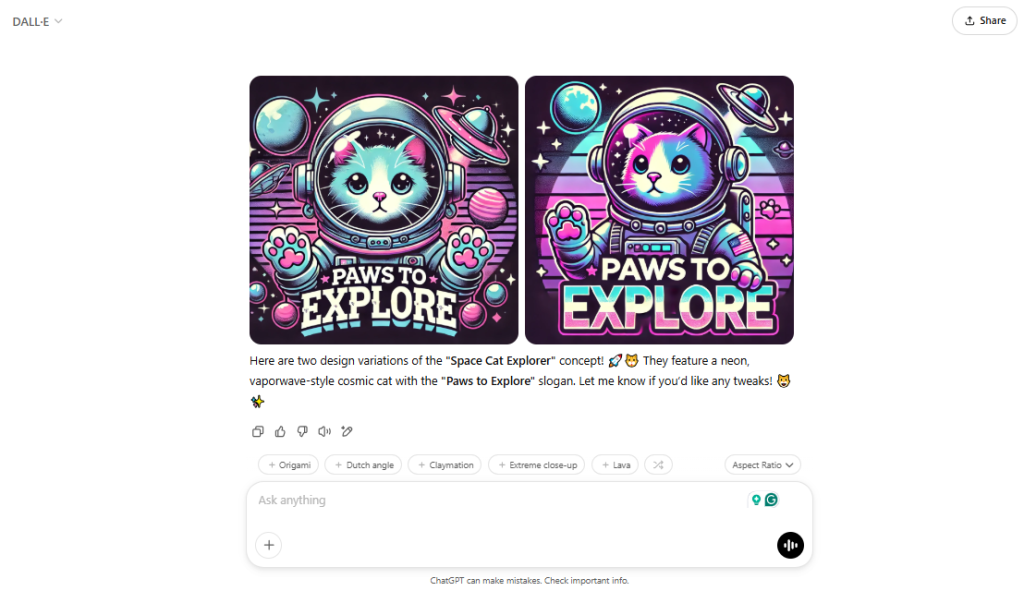

After finalizing your artwork, upload it to print-on-demand sites like Redbubble and Teespring. These platforms handle printing, shipping, and customer service, letting you earn a percentage of each sale. Your designs remain available online 24/7, so you can make money from AI-powered art around the clock, even as you focus on other tasks.
Tips for Implementation
- Prompt Examples: When using Midjourney or DALL·E, try starting with simple prompts like “vibrant geometric pattern” or “retro comic-book design with neon colors.” This clarity helps the AI generate more accurate results.
- Trademark Checks: Always research existing trademarks. Avoid using recognizable logos or branded material, as that may lead to legal issues.
- Refine Your Designs: AI outputs might include odd shapes or artifacts. Clean these up in Canva or Photoshop, then add text or minor tweaks to make your design truly unique.
AI-Generated Illustrations for Stock Image Sites
Stock image platforms serve millions of users who need visual content for websites, social media, or print publications. You can use AI to make money by creating illustrations, patterns, or vectors and selling them on sites like Shutterstock, Adobe Stock, or iStockPhoto. Focusing on trending topics—such as technology, remote work, or sustainable living—can increase the likelihood of downloads.
Each time someone downloads your AI-generated art, you earn royalties. This system allows you to produce images upfront and generate passive income long-term. If you can consistently upload fresh, high-quality graphics, you’ll be well-positioned to grow a sizable portfolio. Over time, multiple downloads of multiple images can translate into significant earnings—even if you start small.
Tips for Implementation
- Image Sizes and Formats: Different platforms have unique requirements. Common formats include JPEG or PNG for basic images, while vector files (EPS, AI, or SVG) are highly valued for more versatile uses.
- Relevant Tags and Descriptions: Stock sites rely on keyword searches, so label your art with descriptive tags and phrases. If you create a digital illustration of a person working on a laptop, use tags like “remote work,” “home office,” and “freelancing” for better discoverability.
- Quality Control: Even AI-generated illustrations need a personal touch. Before submission, check for odd details, pixelation, or watermark-like artifacts. A polished final product is more likely to be accepted and subsequently downloaded.
Freelance Logo or Branding Services
Many small businesses need fresh branding, including logos, color palettes, social media headers, and more. AI tools can speed up the concept phase by suggesting multiple logo ideas in mere seconds.
Take note that while AI can provide a starting point, the human eye is still essential for fine-tuning typography, layout, and other design aspects that define a brand’s unique identity.
Establish a freelance profile on gig platforms like Fiverr, Upwork, or your own website. Emphasize your quick turnaround time and lower cost compared to traditional design agencies.
You can also bundle services, such as offering a logo design, social media header, and brand color guidelines as a package deal. This approach often appeals to small businesses on a budget. It allows you to provide high-value services at reasonable rates—another realistic method for leveraging AI to make money.
Tips for Implementation
- Refine AI Concepts: After generating initial logo ideas using AI, solicit client feedback and incorporate their input into the final design. Doing so guarantees a more accurate representation of the brand’s values.
- Provide Mockups: Show how the logo appears on business cards, letterheads, or packaging. Mockups give clients a clearer vision of how the finished product will look in real-world settings.
- Stay Flexible: Clients often request color, shape, and style variations. Keep an open mind and be ready to iterate quickly. A willingness to adapt builds a positive reputation and leads to repeat business.
3. AI Music and Audio Services
AI has evolved far beyond simple text generation. It can now craft entire musical tracks, enhance audio recordings, and even automate parts of the editing process. These tools open the door to new opportunities for content creators, musicians, and freelancers alike.
However, while AI can do almost all the heavy work in generating music, your role as a creative entrepreneur remains crucial. You add the finishing touches, align the work with a client’s brand, and ensure top-tier quality control.
Let’s look at some of the best ways to incorporate AI to make money online in the music space.
Stock Music Creation for Royalty-Free Libraries
Royalty-free music is always in high demand. Video creators, app developers, and businesses need background tracks that suit their projects, yet most don’t have the time or expertise to compose original pieces.
AI composition tools like AIVA (Artificial Intelligence Virtual Artist) make it easy to generate instrumental music in various genres. You can choose from moods like cinematic, upbeat, or ambient, then refine tempo and instrumentation for a more unique feel.
While the AI handles the heavy lifting, you’ll likely still need minor edits—such as smoothing transitions or adjusting volume levels—to ensure a professional mix.
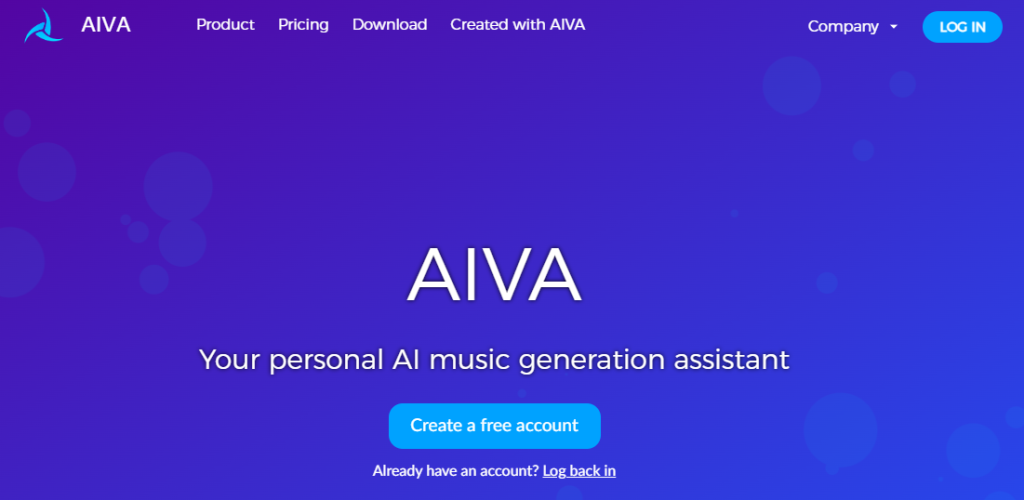

Once your track is complete, you can upload it to platforms like Pond5, AudioJungle, or Epidemic Sound. These libraries connect you to a global market of creators looking for background music. Each time someone licenses your composition, you earn royalties. The more tracks you produce, the higher your chances of generating consistent passive income.
Tips for Implementation
- Plan Your Workflow: Start by selecting a genre and tempo that match current market trends. For example, upbeat corporate tracks or calm ambient music are popular in commercials and vlogs.
- Basic Mixing & Mastering: Even a simple AI track benefits from balanced sound levels. Aim for clear instrument separation and consistent loudness. Free tools like Audacity or GarageBand can help.
AI-Generated Jingles for Local Businesses
Short, catchy jingles are a powerful way for local businesses to stand out, whether it’s a neighborhood bakery or a small-town auto shop.
Many business owners want a custom tune for social media ads, radio spots, or in-store announcements, but they often can’t afford a high-end production studio. AI-driven music software speeds up the composition process, enabling you to pitch creative, budget-friendly jingles without spending days in a recording booth.
You can approach local restaurants, boutiques, and service providers with a ready-to-use jingle sample. Emphasize that the turnaround time is quick and that you’ll provide multiple versions—like different durations or styles—for a flat fee. You can also charge extra for additional revisions or more complex edits.
If you excel at marketing, bundle your jingle service with other offerings, such as short promotional videos or voice-over ads.
Tips for Implementation
- Brand Integration: Incorporate the business’s name, slogan, or unique selling points directly into the jingle. AI tools can help with melody generation, but your human touch ensures it aligns with the brand’s identity.
- Multiple Style Samples: Offer a pop version, a relaxed acoustic variant, or even a jazz feel. This variety helps you stand out and gives clients the feeling of a custom solution.
- Clear Revision Policy: Make sure your contract or agreement outlines how many edits you’ll do at no extra cost. This prevents scope creep and protects your time.
AI-Assisted Podcast Editing and Audio Cleanup
With the podcasting boom in full swing, creators need efficient ways to polish their audio. Listeners demand clear, distraction-free sound—especially when episodes can run over an hour. AI-driven platforms like Descript have simplified tasks such as removing filler words (“um,” “uh,” “like”), reducing background noise, and transcribing each episode for easy searchability.
You can drastically cut down on production time while maintaining a professional final product.
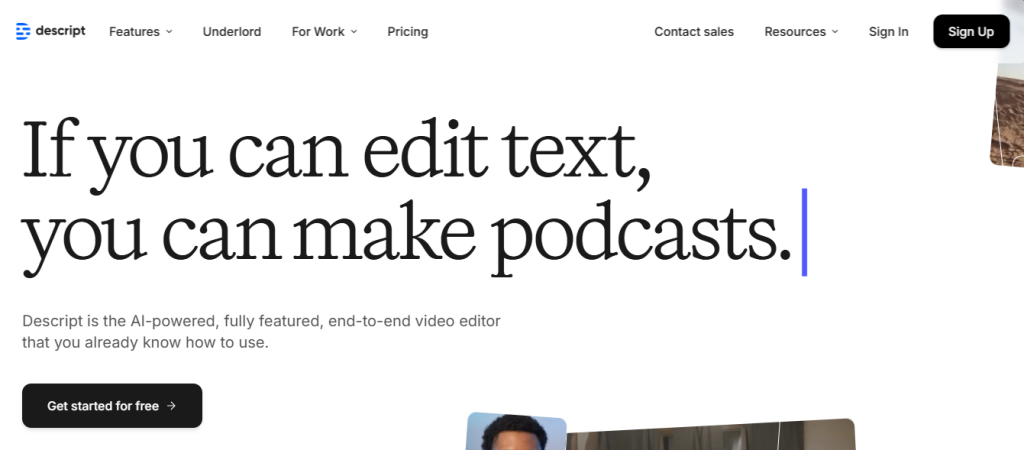

To leverage AI to make money this way, offer “fast audio editing” services to podcasters who release episodes regularly. You can price this by the episode length (e.g., 30 minutes of audio editing at a certain rate) or offer monthly packages for multiple episodes. For more advanced services—such as music intros, professional voiceovers, or in-depth audio engineering—it’s best to charge additional fees.
Tips for Implementation
- Show the AI in Action: Take screenshots or short video clips of how you remove filler words or reduce background noise with tools like Descript. Clients love seeing the streamlined workflow.
- Final Review Matters: While AI can automate much of the editing, a human ear is still crucial. Listen to the entire edited audio to ensure it remains smooth, coherent, and accurate.
- Add-On Services: Consider offering voice EQ adjustments, minor sound design, or even transcript editing (for show notes). These extra services will increase your value and help clients save time.
4. Voiceover Creation and AI Narration
AI-powered voiceovers have quickly become a game-changer for those seeking new ways to capitalize on technology. These synthetic voices have improved so much that listeners often can’t tell the difference between a machine-generated voice and a human recording.
At the same time, voiceover creation and AI narration offer a flexible path to earning money, even if you lack traditional audio recording skills.
Audiobook Narration for Self-Published Authors
Independent authors often dream of converting their e-books into audiobooks. However, traditional narration can be expensive, involving studio time, voice actors, and specialized editing.
AI-driven narration software, such as Murf or Resemble, offers a more affordable option that still delivers lifelike voices. These programs can read entire chapters in a clear, consistent tone, and you can adjust speed, pitch, and emotion for dramatic effect.
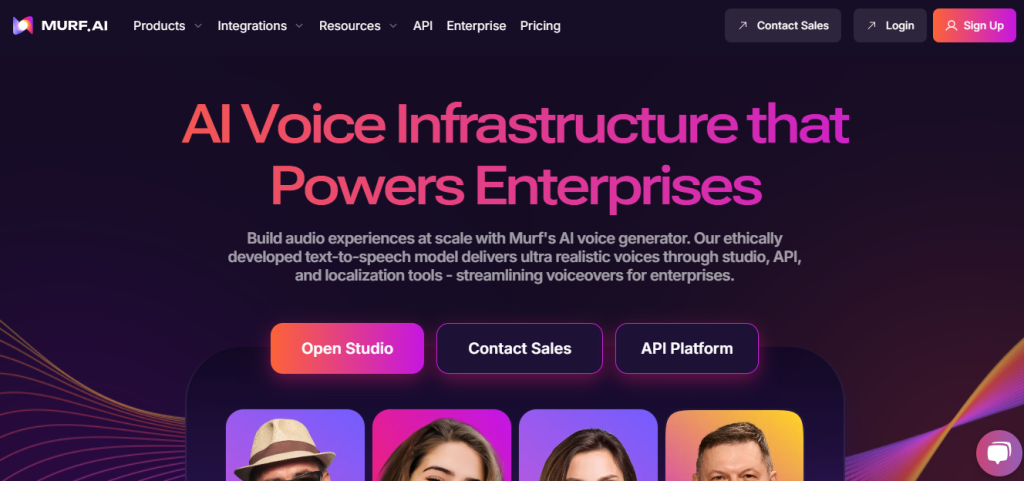

You can market this service on gig platforms like Upwork, Fiverr, or even your personal website. Charge per word, per project, or per finished hour of audio—whichever your client finds most appealing.
If you master the software’s settings, you’ll be able to offer accents, voice styles, and pacing variations that authors may find compelling. Over time, you can build a portfolio of successful audiobook conversions and cultivate repeat clients who publish multiple titles.
Tips for Implementation
- Adjust Voice Parameters: Experiment with voice speed, tone, and pitch to ensure a natural-sounding narration. Most AI platforms let you refine parameters for clarity, emphasis, or drama.
- Final Accuracy Check: AI tools sometimes mispronounce uncommon words or names. Conduct a final pass of the recording and look for mistakes or odd pacing.
- Offer Additional Services: Bundle complementary services—like adding background music or creating cover art slides for video audiobook formats—to differentiate yourself in the marketplace.
Voiceovers for YouTube Videos or Ads
Content creators on YouTube rely heavily on voice-overs for tutorials, product reviews, and animated explainer videos. Likewise, small businesses need quick, affordable ad spots to run on social media or local broadcasts.
AI-generated voices provide a convenient solution to these situations by offering consistent quality and tone across multiple videos or ads. It helps build a recognizable brand voice, which is crucial for growing an audience.
Use AI to make money by offering voiceover packages that cater to specific client needs. For YouTubers, you might charge based on script word count or a flat fee per minute of narration. For businesses, structure your rates around the project type—short ad spots, longer explainer videos, or how-to guides.
Tips for Implementation
- Show Demo Reels: Record brief samples in different voice styles—casual, authoritative, upbeat—to demonstrate versatility. Male, female, or even childlike tones can be generated by certain AI platforms.
- Match the Client’s Brand Tone: An upbeat voice might suit a lifestyle vlog, while a calmer, more formal tone works better for a corporate training video. Tailor each voice’s emotion and tempo to the subject matter.
- Stay Open to Revisions: Clients may request slight adjustments in pacing or energy level. Clarify your revision policy to ensure smooth collaboration.
5. AI Video Creation and Editing
Video is one of the most effective ways to engage audiences online, yet many people feel intimidated by the idea of editing clips or creating professional-looking visuals.
Fortunately, AI tools have lowered the barrier to entry, so even beginners can produce polished content without a costly setup or advanced skills. In short, you can now use AI to make money through video creation and editing.
Automated YouTube “Faceless” Content
Many popular YouTube channels thrive without ever showing the creator’s face. These channels often use voice narration paired with stock footage or simple animations to keep viewers engaged. By combining AI-generated scripts from tools like ChatGPT with automated video creators such as Pictory or InVideo, you can swiftly transform text into visually appealing content.
The AI platform matches parts of the script with relevant imagery or video clips, leaving you to handle minor edits, ensure factual accuracy, and fine-tune the final presentation.
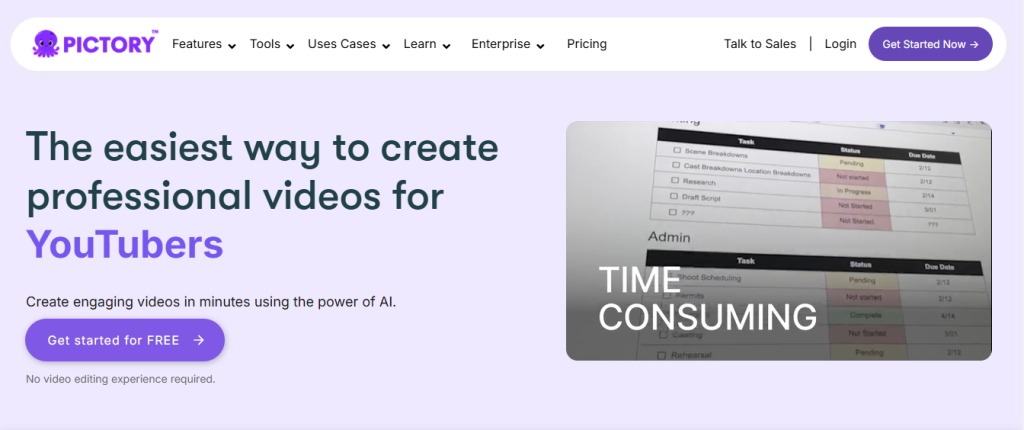

To make money from your channel, you can join the YouTube Partner Program once you meet its requirements for watch hours and subscribers. Ad revenue can then provide a steady stream of income. Additionally, you can incorporate affiliate links in your video descriptions or partner with brands that pay for product placements or sponsorships.
Tips for Implementation
- Niche Selection: Popular niches include tech reviews, top-ten listicles, lifestyle hacks, and historical documentaries. Choose a topic you’re genuinely interested in to maintain consistency.
- Content Quality: Although AI tools can automate scriptwriting, ensure you fact-check and refine the final text. High-quality, accurate content fosters audience trust.
Short Video Ads for Local Businesses
Short video ads are an effective way for small shops, restaurants, and service providers to capture attention on social media. Platforms like Instagram and TikTok reward brief, eye-catching clips, and local businesses often lack the time or resources to create these ads in-house.
AI-powered tools simplify the process of generating captions by applying transitions and adding special effects. It lets you deliver professional-looking results in a fraction of the time.
With an efficient workflow, you can offer quick turnaround ad creation to multiple clients, charging a flat fee per 15 to 30-second spot or offering monthly packages for recurring campaigns.
Aside from becoming a valuable partner to these businesses, you also benefit from their success when your ads drive foot traffic or sales.
Tips for Implementation
- Targeted Messaging: Work closely with businesses to identify their unique selling points—great for hooking viewers early in short ads.
- Stay Current: Platforms like Instagram and TikTok continuously update formats and features. Keep track of these changes to consistently deliver ads that look modern and meet the recommended specifications.
6. AI-Assisted Social Media Management
Social media is an ever-expanding landscape where businesses, influencers, and everyday users compete for attention. Posting engaging content regularly can feel like a full-time job, especially when you factor in caption writing, hashtag research, and audience interaction.
This is where AI-driven tools come into play, freeing you from repetitive tasks and helping you focus on big-picture goals. If you’ve been looking for ways to use AI to make money—or simply to streamline a service you offer—AI-assisted social media management might be your next profitable venture.
But always remember that your role as a human expert remains essential. AI can supply content, insights, or messaging flows in seconds, but it’s up to you to ensure brand alignment, add creative flair, and handle exceptions that automation can’t address.
Balancing these elements gives your clients the best of both worlds: high efficiency backed by genuine human understanding.
Automated Caption and Post Generation
Many small businesses and influencers struggle to craft compelling social media captions day after day. AI tools like Copy.ai can rapidly generate ideas, while ChatGPT can produce multiple caption variations for A/B testing. It removes the guesswork from content creation so you can focus on visuals, branding, and audience engagement.
When it comes to turning your new AI-powered skill set into income, consider offering social media content packages. For a flat monthly fee, you can promise daily or weekly posts tailored to your client’s niche. By bundling daily captions, schedule management, and even basic graphics, you provide a comprehensive solution that saves clients both time and stress.
Tips for Implementation
- Platform-Specific Tailoring: Tailor wording to each platform’s style—short and snappy for Twitter, visually descriptive for Instagram, and professional for LinkedIn.
- Quality Assurance: Encourage clients to review each caption for brand voice accuracy before it goes live.
AI Analytics for Trending Hashtags and Optimal Post Times
Social media platforms often reward well-timed posts with better reach and visibility. Determining the best times to post can be tricky, though, as audience activity differs widely by location, industry, and even day of the week.
AI-driven analytics platforms can solve this puzzle by tracking follower patterns, identifying trending hashtags relevant to your niche, and suggesting ideal posting windows for maximum engagement. When you pair these insights with well-crafted captions, you create a powerful one-two punch that boosts organic growth.
To transform this strategy into a money-making service, position yourself as a social media optimization specialist. Offer weekly or monthly analytics reports that detail the best times to post, the most effective hashtags, and any emerging trends. You can bundle this with your content generation packages to provide an all-in-one solution.
The convenience of a single point of contact for both creative and strategic needs often justifies premium fees, making it an excellent path toward leveraging AI to make money.
Tips for Implementation
- Deliver Clear Reports: Demonstrate how to compile a concise weekly or monthly report that clients can easily understand.
- Suggest Incremental Adjustments: Encourage clients to test different hashtag sets or posting times so they see the ongoing value of your service.
7. AI-Enhanced Translation and Transcription
In today’s interconnected world, the need for quick, accurate translations and transcripts has skyrocketed. Companies want to reach international audiences, while content creators aim to make their work accessible in multiple languages.
AI can help with these tasks by automating some of the most time-consuming processes. It simplifies workflow while opening new avenues for those who leverage AI to make money.
Both multilingual subtitling and transcription services can generate steady income streams—especially when you cater to specific client types like international YouTubers or business coaches.
Adding small value-boosting options, such as stylish caption designs or post-webinar summaries, sets you apart from run-of-the-mill providers.
Multilingual Video Subtitling
Video content often gains broader viewership when it includes captions or subtitles in multiple languages. AI-powered tools such as Google Cloud Speech-to-Text can transcribe a video’s spoken audio, while DeepL (or similar platforms) handles translations into various target languages. Once AI does the majority of the work, a human touch ensures the final subtitles match local nuances and cultural references.
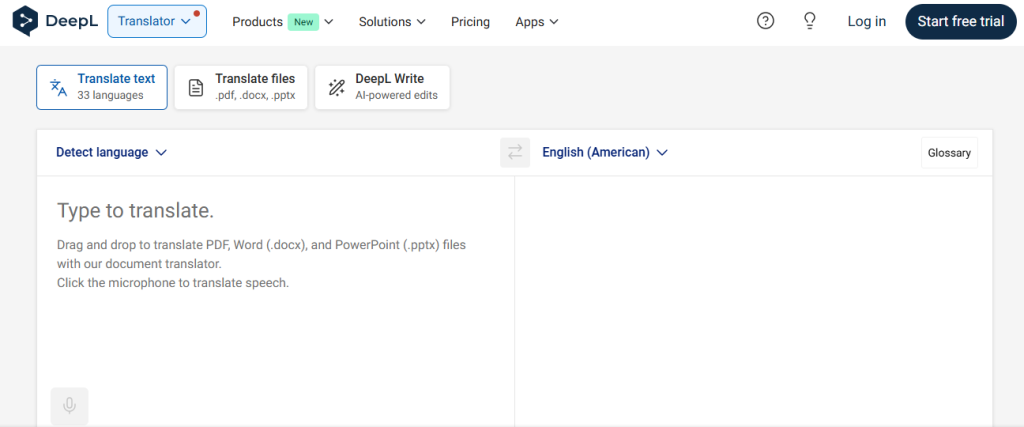

Many YouTubers and online educators seek “multilingual subtitling” to tap into new markets. You can offer this as a service on gig platforms like Fiverr, marketing it specifically to content creators targeting international audiences.
Charging a base fee for one language and then adding extra for each additional translation is a common pricing model.
Some clients may also request custom fonts, styling, or placement. You can then charge a premium for these personalized settings.
Tips for Implementation
- Quality Control: Emphasize a manual review step to catch AI slip-ups or awkward word choices.
- Offer Customization: Suggest specialized fonts or branded styling for clients seeking a more professional appearance.
Transcription Services for Podcasts or Webinars
Podcasters, webinar hosts, and corporate teams regularly need transcripts for repurposing content or meeting accessibility requirements. AI-driven engines can tackle the initial transcription and let you generate rough text in minutes rather than hours. You then step in to refine and format the transcript so each sentence is accurate and easy to read.
Tips for Implementation
- Stay Consistent: Stress consistent formatting with timestamps, speaker tags, or section headers to help clients navigate the transcript.
- Offer Bonus Services: Suggest adding a summary or blog post draft to provide extra value and justify higher rates.
8. AI Chatbot Solutions for Customer Support
Businesses continually look for ways to enhance their customer support while cutting operational costs. AI-powered chatbots present a swift, efficient method for handling routine inquiries. It solves common issues so that human support teams can focus on more complex tasks.
Basic FAQ bots reduce the burden on human support teams while lead-generation bots actively capture potential clients at critical moments. By developing expertise in these tools, you can position yourself as a valuable consultant or freelancer.
They require minimal technical know-how yet have a significant impact on a company’s day-to-day operations.
Over time, you can build a portfolio of successful bot implementations and use those case studies to attract more clients, ultimately harnessing AI to make money in a field where demand continues to grow.
Basic FAQ Bot Development
Many businesses, such as e-commerce stores and local service providers, deal with a constant stream of similar customer questions—“Where’s my order?”, “What are your store hours?”, “Do you offer refunds?”
By using user-friendly platforms like ManyChat, you can build a simple FAQ chatbot that answers these queries in real-time. The process typically involves defining a list of common questions, setting up automated responses, and launching the bot on a website or social media page.
Best of all, you don’t need to be a coding whiz: these platforms feature drag-and-drop interfaces and pre-built templates to guide you.
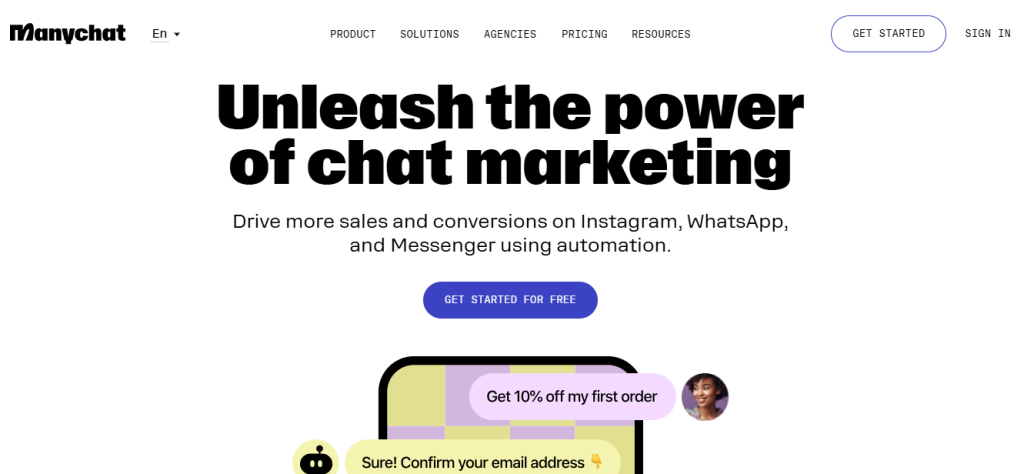

Selling setup and maintenance services for FAQ bots can be a reliable, recurring source of income. You can charge an initial fee to design and implement the bot, plus an ongoing monthly retainer for updates, analytics reviews, and minor customizations.
Small to medium-sized businesses often see immediate value in offloading basic inquiries to an AI-driven tool, and this makes your service more attractive. Your expertise in selecting relevant questions and crafting user-friendly replies becomes the core value you provide.
Tips for Implementation
- Personalize the Experience: Encourage brand-specific phrases, tone, and even humor so the chatbot doesn’t feel too robotic.
- Stay Adaptive: Maintain open communication with your client to regularly update or refine scripts as the audience grows or changes.
- Plan for Edge Cases: Even an FAQ bot needs fallback options. Define a path for unexpected questions so users aren’t stuck.
Lead Generation Bots for Websites
While FAQ bots aim to reduce repetitive support queries, lead-generation chatbots target website visitors who might become paying customers.
By popping up at the right moment—often on landing pages or pricing sections—a chatbot can collect information such as names, email addresses, or phone numbers and then forward these details to a sales team. It is especially popular in sectors like real estate, consulting, and service-based industries, where every new lead has significant revenue potential.
Unlike basic FAQ bots, lead-generation chatbots also often warrant a higher price tag because they directly impact a client’s revenue. You can charge a one-time fee for building the bot, and then add a monthly maintenance or performance-reporting package.
Tips for Implementation
- Prioritize Data Privacy: Stress the importance of secure handling of personal information. Clients must comply with relevant data protection laws, like GDPR or CCPA.
- Include Clear Prompts: Add strong calls to action or next-step guidance to push users toward scheduling a call or requesting a quote.
- Track Key Metrics: Offer monthly performance reports showing how many leads the bot generated. Providing this data justifies your ongoing service fee and keeps the client informed about the chatbot’s value.
9. Data Analysis and Market Research with AI
Companies and entrepreneurs often need quick, clear insights from large amounts of data. This trend will continue to grow in the next years, with data being one of the most highly in-demand commodities to be processed and analyzed.
For instance, product reviews might come in by the hundreds, and a human team can only read so much before missing details. Algorithms excel at crunching numbers and spotting patterns faster than manual methods, making it a powerful way for businesses—and for you—to use AI to make money.
From gauging customer sentiment to building all-in-one analytics dashboards, AI has made it easier than ever to deliver solid insights fast. You can tap into this demand by offering services that help businesses see trends, measure brand perception, and refine their strategies based on data rather than guesswork.
Sentiment Analysis for Product Reviews
Many e-commerce sellers and business owners want to know exactly how their customers feel about their products. But manually reading hundreds or even thousands of reviews is time-consuming.
AI-based sentiment analysis platforms let you sift through these comments in bulk. The software assigns sentiment scores—positive, negative, or neutral—based on keywords and phrases. Armed with these scores, you can highlight the top areas of concern and the most celebrated product features in a clear, data-driven report.
When offering sentiment analysis services, propose a project fee that covers the initial data collection, cleaning, and interpretation of the results. After you deliver the first round of insights, you can upsell weekly or monthly updates to help clients track evolving consumer feelings.
This arrangement works especially well for businesses that release frequent product updates, run seasonal promotions, or simply want to monitor ongoing feedback.
Tips for Implementation
- Clear, Visual Reporting: Provide concise charts, color-coded graphs, or word clouds to ensure your results are easy to grasp.
- Actionable Insights: Explain which product features or user feedback points need attention to help guide your client’s next steps.
Small Business Analytics Dashboards
Smaller companies often track sales, marketing performance, and website metrics separately. If you combine all these data sources into an AI-driven analytics dashboard, they gain a streamlined view of their top indicators.
Tools like Tableau with AI features can automatically highlight trends, forecast outcomes, and even recommend next actions. Whether it’s a local bakery wanting to optimize daily production or a budding online store aiming to boost conversion rates, a unified dashboard brings vital metrics together in one place.
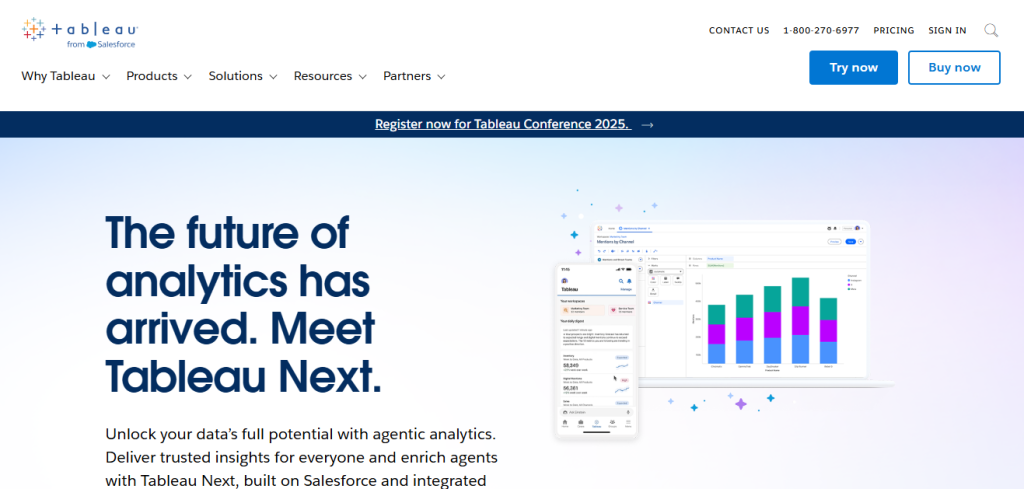

Setting up these dashboards can be far more lucrative than just selling a one-time report. Start with a setup fee that covers data integration, custom KPI identification, and dashboard design. Once everything is live, offer monthly support or additional consulting hours for updates, troubleshooting, or deeper analysis. You can also tailor the solution by industry—retail, SaaS, or B2B—making your service feel specialized and worth a higher rate.
Tips for Implementation
- Illustrate Dashboard Examples: Provide screenshots of a sample Tableau dashboard, highlighting how data updates in real-time.
- Industry-Specific Customization: Show clients how you’ll adapt the dashboard for their niche, whether it’s e-commerce, consulting, or local services.
- Explain Predictive Features: Emphasize AI’s capacity to forecast sales or user behavior, which gives these dashboards a major edge over static spreadsheets.
10. AI-Assisted Online Tutoring and Course Creation
Many educators, coaches, and subject matter experts realize that sharing their expertise online can be both fulfilling and profitable. Yet creating lesson plans, quizzes, or entire e-learning modules can become a time-consuming process—even for experienced professionals.
That’s where artificial intelligence steps in to simplify tasks, maintain high quality, and speed up content production. In other words, AI can help you reach more learners while also allowing you to make money efficiently.
Quick Lesson Plan and Quiz Generation
Creating lesson plans and quizzes usually takes educators hours of brainstorming and drafting. With AI tools like ChatGPT, you can generate outlines or quiz questions in a matter of seconds. Whether you’re teaching a foreign language, coding fundamentals, or advanced academic concepts, AI provides a rapid first draft.
You can then refine it to match your teaching style, making every lesson both engaging and informative.
Once you’ve used AI to streamline your content creation, you can package your newfound efficiency into marketable services and products. For example, offer tutoring packages—one-on-one or group sessions—where you incorporate AI-generated materials for consistent, top-quality learning experiences.
You can also create digital lesson modules and sell them on platforms such as Teachable or Udemy to generate income even when you’re not actively teaching. With AI handling much of the initial workload, you’ll have more time to focus on personalized instruction, student engagement, or expanding your course offerings—all of which can lead to higher earnings.
Tips for Implementation
- Accuracy and Personal Touch: While AI is efficient, it’s still crucial to verify facts, check the logic of questions, and add your unique teaching voice for a truly valuable learning resource.
- Routine Updates: Courses can become stale if the material never evolves. Update your quizzes and lesson plans periodically using AI so your offerings remain current and relevant.
Automated Learning Modules and E-Learning Content
Lesson plans and quizzes are just one piece of the puzzle. If you’re aiming for a comprehensive educational experience—especially for corporate training or specialized workshops—you need well-structured, interactive modules.
Tools like Articulate 360 can seamlessly integrate AI-generated text, images, or videos into engaging digital lessons. When you combine AI content with multimedia elements and knowledge checks, you create an immersive environment that caters to different learning styles.
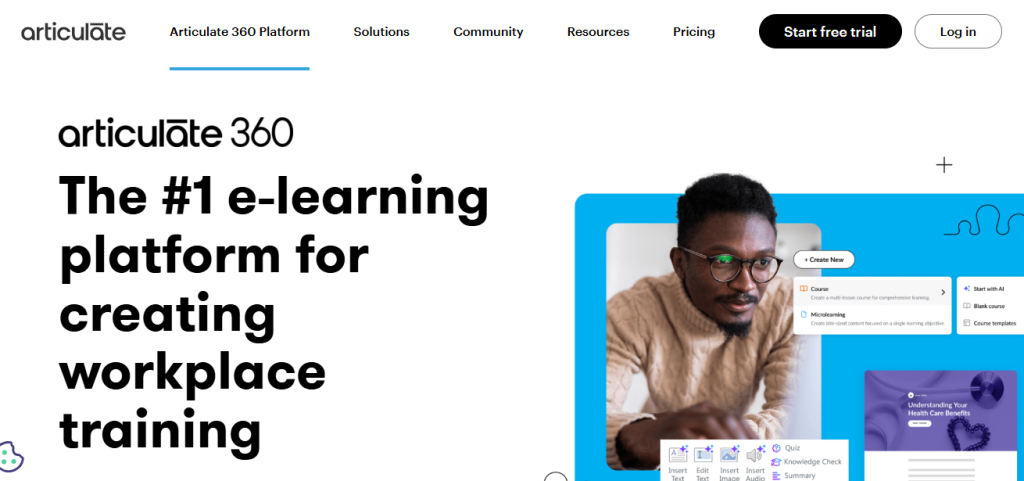

Developing a robust course or training program can significantly increase your income potential. Rather than selling individual lessons, you can build entire self-paced courses and license them to companies for ongoing employee training.
Alternatively, package your expertise into a full-service offering: course creation plus platform setup, complete with AI-generated videos, quizzes, and progress tracking. This all-inclusive approach often commands higher fees since it saves businesses the hassle of coordinating multiple freelancers or in-house teams.
Moreover, if you specialize in a particular niche—like healthcare, tech, or leadership development—you can position yourself as an expert provider and charge a premium rate.
Tips for Implementation
- Embed AI Elements: Demonstrate how to insert quizzes, videos, and AI-generated slides within the module. Visual walkthroughs help clients and students appreciate the seamless experience.
- Measure Learner Progress: Suggest methods for tracking completion rates, quiz scores, and other learning metrics so you can offer targeted feedback. Businesses value clear data that shows improvement or knowledge gaps.
- Offer Ongoing Support: Once a module is delivered, some clients may need help updating content or analyzing learner performance. Include a maintenance or consultancy package for recurring revenue.
11. AI-Backed Resume and Career Services
In a highly competitive job market, a strong resume and refined interview skills can make all the difference. Many job seekers spend hours polishing their resumes and preparing for questions but still struggle to stand out. Enter AI-driven platforms that simplify and streamline the process, providing targeted feedback and personalized career support.
Leveraging AI for resume building and interview prep creates multiple revenue streams while allowing you to assist job seekers in a measurable, impactful way. By combining AI’s speed and efficiency with your personal expertise, you offer a unique blend of technology and insight.
Automated Resume Optimization
Platforms like Kickresume and Teal utilize AI to enhance resumes in multiple ways. They suggest stronger wording, highlight relevant achievements, and even tailor the document to specific job postings. These tools ensure resumes pass Applicant Tracking Systems (ATS) more effectively so candidates have a better chance of making it to the interview stage.
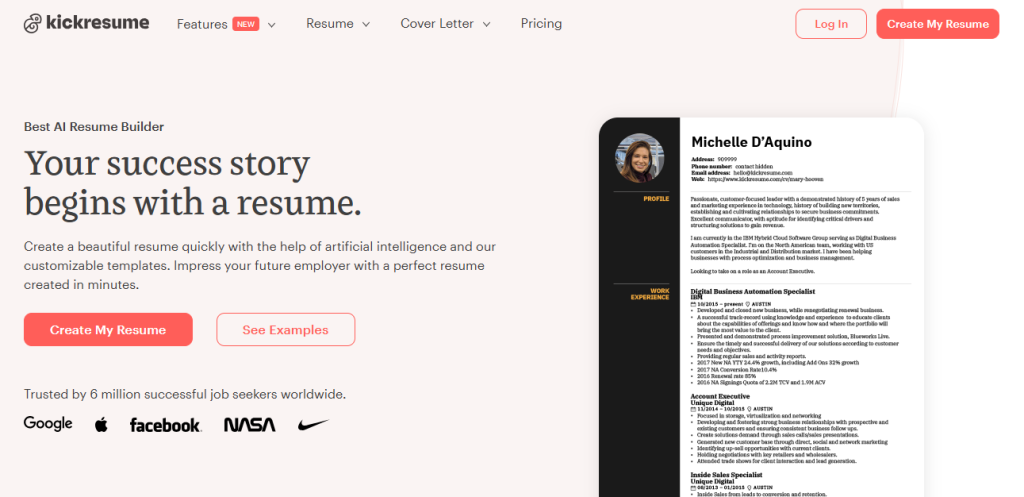

You can position yourself as a “resume revamp” specialist who leverages AI to produce ATS-friendly results. Charge a flat fee for a basic resume update or bundle services—like LinkedIn profile optimization and cover letter edits—to boost your earnings.
You can also consider offering specialized packages for new graduates, mid-career professionals, or executives. This will allow you to customize your approach to match each demographic’s unique needs.
Tips for Implementation
- Personal Touch Matters: While AI can handle formatting and wordsmithing, advise clients to personalize certain sections for authenticity and clarity.
- Reassurance on Accuracy: Double-check all suggested edits for errors or awkward phrasing. The final resume should read naturally to human recruiters.
AI-Powered Interview Question Prep
Even with a great resume, candidates often freeze when confronted with tough interview questions. Using an AI tool like ChatGPT, you can generate common questions for specific roles, along with sample answers.
Offer one-on-one “interview prep sessions” where you combine AI-generated questions with your own coaching experience. Market this especially to new grads who lack interview practice or professionals shifting careers who need help pivoting their pitch.
You can charge for each session or create subscription packages that include weekly mock interviews, feedback summaries, and additional AI-driven resources.
Tips for Implementation
- Balance AI with Human Insight: ChatGPT’s suggestions can be generic; enhance them by sharing real-world anecdotes or company-specific details.
- Use the STAR Method: To structure answers effectively, provide a quick breakdown (Situation, Task, Action, Result). Doing so helps candidates stay focused and clear.
- Document Progress: Keep track of clients’ improvements over time. Sharing tangible metrics—like reduced interview jitters or better callback rates—reinforces the value of your service.
FAQs About Using AI to Make Money
You only need a basic understanding of AI tools and a willingness to learn. User-friendly platforms handle the heavy technical work.
Many AI platforms have free tiers or low-cost plans. You can start small and upgrade as you learn more about using AI to make money.
Absolutely. Most AI solutions are built with non-technical users in mind. They simplify the process so anyone can use it.
Try AI-assisted writing, basic graphic design, or simple chatbot setups. These are easy ways to explore using AI to make money without heavy investment.
It depends on your niche and marketing efforts. Some see quick gains by applying AI to make money with trending ideas, while others build income gradually.
AI is constantly improving, but human oversight is still crucial. Double-check and polish outputs to ensure consistent quality while using AI to make money.
AI can streamline tasks, but creative and strategic thinking remain human strengths. Combining your expertise with AI to make money maximizes your opportunities.
Using AI to Make Money: Turning Bold Ideas into Real Income Streams
Artificial Intelligence has ushered in an era where even the most non-technical individuals can create profitable ventures in record time. We’ve seen how content generation, design, audio editing, data analysis, and tutoring—once time-intensive tasks—can be automated or enhanced through AI tools.
More than a passing trend, it’s a shift that levels the playing field for solo entrepreneurs, small businesses, and ambitious freelancers. Whether you’re producing AI-generated art for print-on-demand sites or using chatbots to funnel leads for local businesses, technology has stripped away many barriers to entry.
If you’re serious about using AI to make money, now is the time to pick a method that resonates with your strengths. Experiment, refine your process, and don’t shy away from mixing approaches.
The true power of AI emerges when you combine human creativity with machine efficiency—something no spreadsheet or scripted workflow can replicate on its own.







